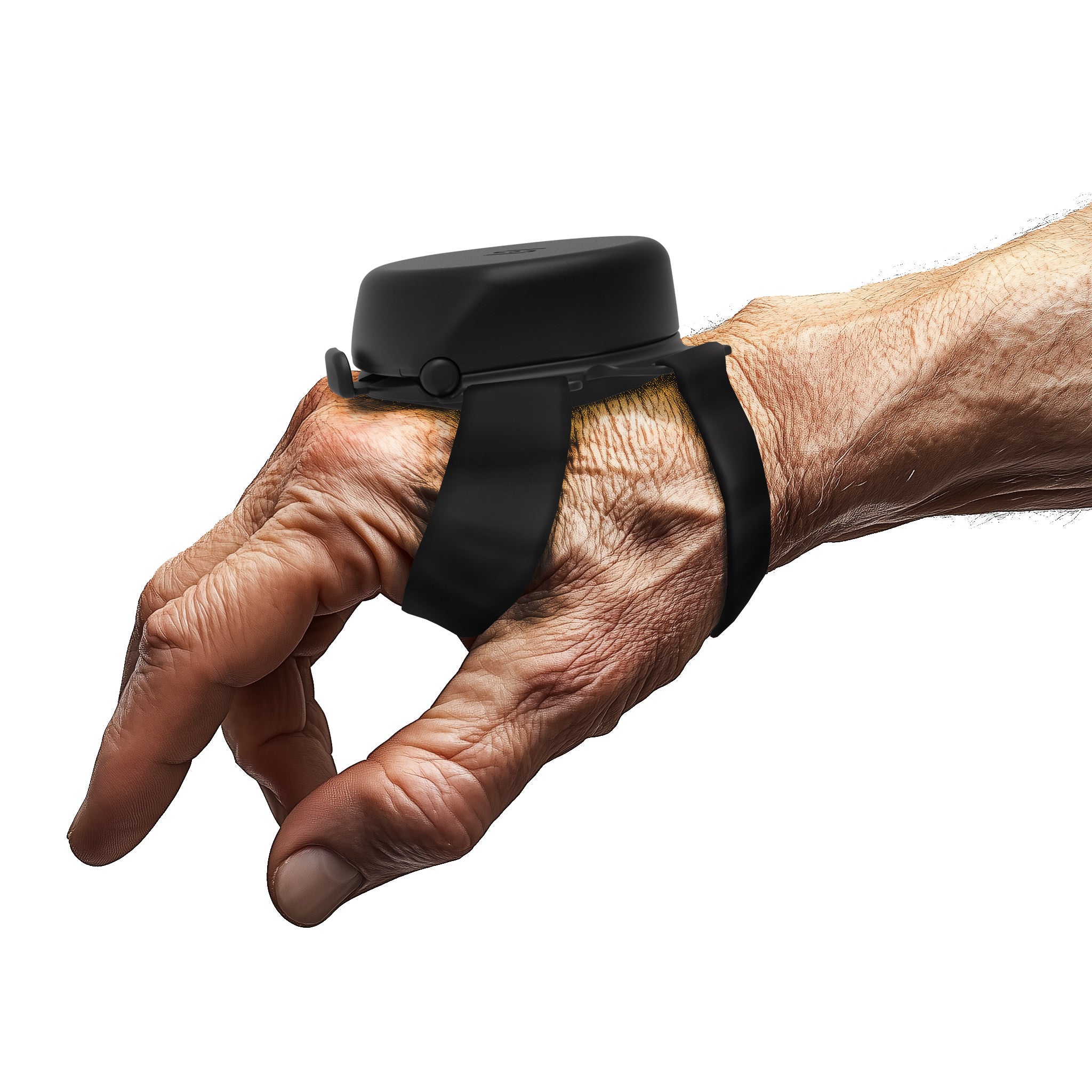Often described by individuals as a feeling of vibrations or internal vibrations, internal tremors can be upsetting and uncomfortable. If you're wondering, "I feel vibrations in my body, what does that mean?" it's important to understand that these sensations are usually not perceptible to others. While they can manifest in various regions, such as the arms, legs, or torso, they differ from the spinning sensation known as vertigo.
Commonly associated with neurological disorders like Parkinson's disease (PD), multiple sclerosis (MS), and Essential Tremor (ET), internal tremors can also be a physical manifestation of anxiety. Individuals often report the sensation of internal vibration during periods of heightened stress or panic, indicating a strong mind-body connection.
This comprehensive exploration will address the multifaceted nature of internal tremors, investigating their potential triggers, including medical conditions and emotional stressors, and discussing effective strategies for managing them. Among these strategies, we'll examine lifestyle modifications, relaxation techniques, and interventions that will encompass medical and holistic approaches to alleviate these unsettling sensations, providing you with clearer answers for common questions like “how to stop feeling shaky inside” and “why does it feel like my body is vibrating.”
Keynote Questions About The Topic
How to stop vibration in the body?
To stop or reduce body vibrations, follow these steps:
-
Determine the Root Cause: Determine whether the vibrations are caused by external factors, lifestyle factors, or medical disorders.
-
Medical Consultation: Consult a physician to rule out or treat any underlying issues.
-
Medication: If prescribed, you can use medications to control anxiety or tremors.
How to stop internal tremors?
Lifestyle changes:
Looking for “body tremors at night” relief or wondering how to stop vibration in the body? To help reduce the severity of tremors, consider the following lifestyle adjustments:
-
Limit Caffeine Intake: Energy drinks, coffee, tea, chocolate, and certain medications often contain caffeine, which stimulates the nervous system and can worsen tremors.
-
Control Sugar Consumption: High sugar intake can cause blood glucose levels to fluctuate, potentially intensifying tremors. A balanced diet with minimal sugar spikes is recommended.
-
Avoid Tobacco Products: Nicotine, a stimulant found in tobacco, can exacerbate tremors and should be avoided to help stabilize symptoms.
Why do I feel vibrations in my body?
Numerous conditions might cause you to feel internal tremors. These conditions include inner ear issues that impair balance, twitches in your muscles brought on by stress and exhaustion, and neurological conditions like Essential Tremors (ET) or Parkinson's disease (PD), which are known to induce tremors and vibrating sensations. If you’ve ever thought, “I feel vibrations in my body what does that mean?”, it’s often linked to one of these underlying factors, making medical evaluation important.
Understanding Nervous System Disorders and Their Manifestations:
Internal vibrations commonly occur as a natural side effect of numerous neurological disorders. For instance, Parkinson’s Disease (PD) and Multiple Sclerosis (MS) are both neurological disorders that can result in body tremors at night or tremor-like sensations during the day. In PD, these symptoms stem from dopamine depletion, affecting motor control. In MS, nerve damage caused by the immune system disrupts signals between the brain and muscles, leading to similar sensations.
If you’re unfamiliar, Parkinson’s Disease (PD) involves the progressive loss of dopamine-producing neurons in the brain's substantia nigra, leading to symptoms such as muscle rigidity, tremors, slow movements, and impaired posture and balance. Multiple Sclerosis (MS) is a chronic autoimmune disorder where the immune system attacks the protective covering of nerve fibers (myelin), disrupting communication between the brain and the body. Symptoms can include speech difficulties, numbness, muscle weakness, and coordination challenges.
Of course, we can’t discuss body tremors without mentioning Essential Tremors (ET), as it’s among the most common causes of body tremors. Essential Tremor (ET) is a neurological condition that often involves rhythmic tremors, primarily affecting the hands but potentially extending to the head, voice, and other areas. It is linked to dysfunction in the cerebellum, which controls motor coordination.
Understanding these disorders is key in understanding what causes internal tremors, addressing the unsettling question, "I feel vibrations in my body what does that mean," and finding effective strategies to manage such symptoms.
Navigating the Unseen Tremors: Strategies for Internal Tremor Relief:
The experience of internal tremors, often likened to a shaking feeling within the body, can sometimes be due to non-medical problems. This makes pinpointing the precise internal tremors causes a bit hard for people because these reasons are unseen or not completely visible or clear. For instance, these tremors could be a withdrawal symptom from alcohol, especially after a sudden cessation by heavy drinkers. This reaction is part of the body's process of readjusting to the absence of alcohol and generally diminishes with proper treatment and time. Or, it could just be familial, which means that you have a long list of tests and proper examination to reach the correct diagnosis.
Addressing Internal Tremors: Comprehensive Treatment Approaches:
Internal vibrations commonly occur as a natural side effect of numerous neurological disorders. For instance, Parkinson’s Disease (PD) and Multiple Sclerosis (MS) are both neurological disorders that can result in body tremors at night or tremor-like sensations during the day. In PD, these symptoms stem from dopamine depletion, affecting motor control. In MS, nerve damage caused by the immune system disrupts signals between the brain and muscles, leading to similar sensations.
If you’re unfamiliar, Parkinson’s Disease (PD) involves the progressive loss of dopamine-producing neurons in the brain's substantia nigra, leading to symptoms such as muscle rigidity, tremors, slow movements, and impaired posture and balance. Multiple Sclerosis (MS) is a chronic autoimmune disorder where the immune system attacks the protective covering of nerve fibers (myelin), disrupting communication between the brain and the body. Symptoms can include speech difficulties, numbness, muscle weakness, and coordination challenges.
Of course, we can’t discuss body tremors without mentioning Essential Tremors (ET), as it’s among the most common causes of body tremors. Essential Tremor (ET) is a neurological condition that often involves rhythmic tremors, primarily affecting the hands but potentially extending to the head, voice, and other areas. It is linked to dysfunction in the cerebellum, which controls motor coordination.
Understanding these disorders is key in understanding what causes internal tremors, addressing the unsettling question, "i feel vibrations in my body what does that mean," and finding effective strategies to manage such symptoms.
The Role of Nutrition in Managing Internal Tremors:
Nutrition plays a crucial role in maintaining overall health and can specifically impact neurological conditions that cause internal body tremors. A diet rich in antioxidants, vitamins, and minerals supports neural function and can help reduce the intensity of tremors. Foods high in B vitamins, such as leafy greens and whole grains, aid in nerve repair and are essential for those always feeling shaky inside. Incorporating magnesium-rich foods, which may help with muscle and nerve function, can also be vital for those experiencing tremors or internal vibrations.
The Significance of Hydration and Electrolyte Balance:
Staying adequately hydrated and maintaining a proper electrolyte balance is essential for those dealing with internal tremors. Dehydration and electrolyte imbalances can exacerbate tremor symptoms and lead to muscle weakness and cramps, contributing to internal body tremors. Ensuring a regular intake of fluids, especially water, and consuming electrolyte-rich foods such as bananas, avocados, and coconut water can help manage these symptoms. For some individuals, these imbalances may even explain why they notice body tremors at night, when hydration and electrolyte levels fluctuate. Keeping your body well-hydrated is a simple yet effective strategy that can complement other treatments and lifestyle changes.
The Interplay Between Lifestyle Factors and Internal Tremors:
Internal tremors, while potentially symptomatic of underlying health issues, can also be influenced by everyday lifestyle choices. The importance of a holistic lifestyle, which includes regular physical activity, stress management, and adequate rest, cannot be overstated in its potential to mitigate the sensations of internal vibrations. Exercise can enhance muscular control and reduce stress, which, in turn, may alleviate tremor symptoms.
Furthermore, sleep quality directly affects neurological health, and poor sleep patterns can exacerbate tremors. Ensuring a restful night's sleep through good sleep hygiene practices may provide significant relief. For some, disrupted sleep may even intensify body tremors at night, highlighting the need for consistency in rest. Meanwhile, the role of psycho-social factors, such as social support and mental health, is increasingly recognized in managing chronic conditions. Engaging with community support groups, whether in-person or online, can offer emotional support and practical tips for living with tremors.
Lastly, environmental factors, such as exposure to certain chemicals or extreme temperatures, can affect the severity of internal vibrations. Being mindful of your environment and adjusting your lifestyle according to your body’s needs can be an ideal complementary approach to managing internal vibrations alongside dietary and medical interventions.
How Steadiwear Offers to Help:
Steadiwear introduces the Steadi-3 Anti-Tremor Glove, an innovative solution for individuals with Essential Tremors (ET) and Parkinson’s disease (PD). Designed to stabilize hand movements and reduce tremors, the Steadi-3 glove is a non-invasive, drug-free, and battery-free device powered by natural hand motions. Its advanced wrist stabilization technology adapts to unique tremor patterns, providing immediate relief and empowering users to regain control in daily activities, especially valuable for those often feeling shaky inside due to uncontrollable tremors.
Key Features of the Steadi-3
Powered by Natural Hand Movements:
Eliminates the need for batteries or charging, providing uninterrupted support.
Non-Invasive and Drug-Free:
Offers a safe alternative to surgery or medication for managing tremors effectively.
Advanced Wrist Stabilization Technology:
Adapts to unique tremor patterns, delivering tailored stabilization for immediate relief.
Enhanced Confidence in Daily Activities:
Empowers users to perform everyday tasks with greater control and ease.
Steadiwear has designed the Steadi-3 to prioritize comfort and simplicity, ensuring the glove is lightweight, durable, and easy to wear for extended periods. Its ergonomic design fits securely without causing discomfort, making it ideal for all-day use at home or in social settings.
As an FDA-recognized Class I medical device, the Steadi-3 meets stringent safety and performance standards, reinforcing Steadiwear’s dedication to providing reliable and effective solutions. By combining innovation and practicality, Steadiwear continues to lead the way in helping individuals regain control and independence in their lives—offering much-needed support for those struggling with body tremors at night or during daily routines.
Conclusion:
In summary, while internal vibrations can be disconcerting, understanding potential internal tremor causes and the available management strategies can provide reassurance and control. From the role of nutrition and hydration in maintaining neurological health to the use of medications and assistive devices for symptom relief, there are multiple avenues to address these sensations.
Remember that while internal tremors are often non-life-threatening, seeking professional medical advice is crucial to ensure they are not indicative of a more serious condition. With the right approach, those experiencing internal body tremors can find effective ways to manage their symptoms and improve their quality of life.
Resources:
https://www.ninds.nih.gov/
https://www.essentialtremor.org/
https://www.nationalmssociety.org/
https://www.diabetes.org/
https://www.nami.org/
https://www.hsph.harvard.edu/
https://www.mayoclinic.org/
https://my.clevelandclinic.org/
https://www.steadiwear.com/



